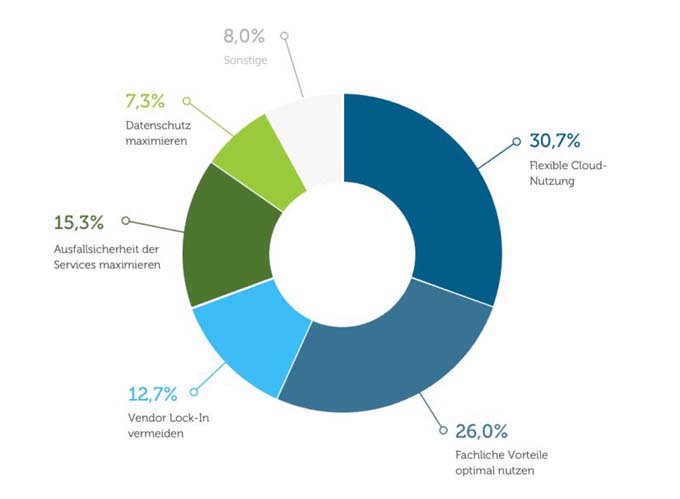Cloud Trends - Ways out of the cloud chaos?
Swiss companies are increasingly relying on the use of cloud computing. In particular, the multi-cloud strategy is becoming more widespread, as a recent study by the IT service provider Interxion showed.

The path to the multi-cloud often led via "shadow IT", as 28.7% of respondents confirm in a new study. Or this path was uncoordinated demand-driven. Cloud chaos was looming in companies. How are Swiss companies tackling the issue and what challenges are they facing? This was investigated by the market researchers at Research in Action on behalf of Interxion. Research in Action surveyed 1400 people from seven European countries, 150 of them from Switzerland.
Multi-cloud is already a reality for many
The responses reveal that 89.3% of Swiss companies are currently looking at an integrated multi-cloud strategy. Only 8% have already implemented it, but one in three plan to do so in the next 18 months. Another 41.3% are planning a long-term implementation. Only 7.4% are ignoring the topic so far, or are using no cloud or only one cloud. This means that multi-cloud is a reality for a large proportion of Swiss companies - but what does it look like in detail?
The ranking by industry
The "Technology and Consulting" sector is currently furthest along in implementing a multi-cloud strategy, with 26.4%. Media and telecommunications" with 15.4% and the financial sector with 13.2% are in second place. Bringing up the rear are the retail sector and "transport and logistics" with 3.5%.
The advantages of the multi-cloud
Cost reduction through multi-cloud is the most important factor for 30.7% of Swiss companies. 26% of respondents value the specialist benefits and focus of offerings in the multi-cloud and their optimal flexible use. Main reasons three and four are maximizing resilience for services with a value of 15.3% and avoiding vendor lock-in with a value of 12.7%.
The challenges with the multi-cloud
Among the challenges on the way to the multi-cloud, 30% of the respondents primarily named the integration of services as a potential technical obstacle. 22% see security risks from the use of different cloud services as a hurdle on the way to the multi-cloud. For 10%, multi-cloud does not fit into the company's strategy.
The outlook for the multi-cloud
When it comes to the use of hybrid cloud services, the most promising area cited, at 36%, is Infrastructure as a Service (IaaS), 30% see Platform as a Service (PaaS) as the greatest benefit, 10% cite Software as a Service (SaaS), and 20.7% cite hybrid infrastructures in general.
Which cloud offering should it be?
The 150 respondents see the future of multi-cloud with 28.7% purely with hyperscalers, 23.3% of the study participants name industry-specific cloud offerings in combination with hyperscalers. Here, offerings that enable easy use of hyperscalers and their networking with the company's own infrastructure are a valuable help. They provide secure and high-performance private cloud access from hyperscalers such as Microsoft Azure, Google Cloud or Amazon Web Services via a physical connection. In addition, it is also possible to connect directly to the cloud PoPs in colocation data centers.
In Switzerland, Interxion offers direct connection via PoP to Google Cloud, AWS and Microsoft Azure. The latter two are the only PoPs in Switzerland. With the help of the Cloud Connect service, it is also possible to connect to the IBM and Oracle clouds.









